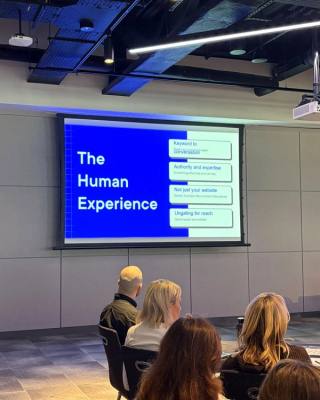On June 28, 2025, the European Accessibility Act (EAA) will come into force, mandating a new level of accessibility standards across a range of goods and services marketed within the EU. This will affect service providers, manufacturers, and digital providers, including every website used to sell products in the EU. The EAA will make life better for millions of Europeans, and as such we welcome its arrival at Kooba. It is worth, however, reflecting on how this policy will affect the bottom lines of businesses across Europe. As I hope to show in this blog, a wider consideration of EU economic policy can enlighten us on the challenges, and the opportunities, that this act represents for European firms.
The primary purpose of the EAA is, clearly, to improve the lives of disabled persons within the EU. However, we would be wise to consider this act within the broader context of EU policy decisions. As Europe seeks to tackle challenges internally and abroad, accessibility legislation has found a secondary function in contributing to the economic and educational goals of the EU. The EAA can thus be seen as contributing to a wider project of European integration, cohesion, and (more recently) competitiveness. In a similar vein, EU policymakers will seek to combine the rollout of accessible features with other regulations regarding economic integration and sustainability.
So what are the economic benefits that could potentially be gleaned from the EAA?
Industrial integration
One clear economic benefit of the EAA will be the further integration of goods and services across the EU. By ensuring that physical and digital products are accessible to every user, they can more easily be produced, consumed and traded across EU borders, allowing for the greater integration of the European economy. As I have already argued, accessible design overlaps with universal design, and is thus a fundamental element of any good design process. The EU, it seems, understands this logic on a basic level, and is willing to use accessibility as a tool for building more universally useful products within its member states.
Economic integration, of course, has always been an overarching goal (arguably the overarching goal) of the EU, but its urgency and importance has been raised as of late. Mario Draghi’s recently published report on “the future of European competitiveness” argues that further integration needs to be accomplished so as to allow the pursuit of dramatic industrial policies, with the goal of growing and modernising the EU economy in line with those of the USA and China. Accessibility and the EAA will be expected to play a small, but significant, role in this massive policy campaign.
European cohesion
Directly related to the goal of integration is that of cohesion. These concepts may sound similar, but there is a nuanced difference between the two. Draghi’s vision of an integrated European economy is an aggressively competitive one, with the strongest sectors thriving whilst the weakest perish. This is tempered by the broader pursuit of cohesion within the EU, as defined in the European Cohesion Policy, which is responsible for roughly a third of the EU budget. “Cohesion” refers to the equal development of different EU states, industries, communities and demographics. Most obviously in the case of accessibility, cohesion means building an EU that actively includes disabled persons in every way possible.
Again, there is a hard-nosed economic rationale behind this project. Cohesion may seem charitable in the short-term, but by developing underserved states and groups, the EU hopes that they may better contribute to the broader European economy in the future. This has worked well in the past. Consider the development of the Irish economy, which thanks to previous investments is now a net contributor to the EU budget. The same logic may well apply to the EAA, which will not only provide disabled persons with greater access to goods and services, but also allow them to better contribute their labour to a more modern EU market. This relates to broader disability policies, such as the Strategy for the Rights of Persons with Disabilities, which sets greater labour market participation as a significant target for inclusion and education campaigns.
Increased market access
Perhaps most obviously, the EU will hope that improving the accessibility of goods and services will result in greater market access and commercial success for European businesses. In 2020, an estimated 87 million EU citizens experienced some form of disability. More accessible products will be easier for these consumers to purchase, use, and sell. This is especially true in the capital goods market, where more accessible products will make disabled workers more productive in their roles. There is also a potential trade benefit, with more accessible european goods sold on more accessible platforms being more attractive to foreign buyers, and universal accessibility across the EU providing a much needed competitive advantage in international markets.
Similar to the EU’s broader cohesion policy aims, the benefits of this strategy become clear over a longer time horizon. The EU, on average, is becoming older, and as a consequence increasingly disabled. By integrating accessibility into every production and supply chain, the EU may hope to future-proof its economy against this gradual demographic shift. Nor is the EU alone in this ageing process. It will not come as a surprise to see the USA, China, and other large economies adopting similar policies as their populations follow Europe’s demographic pattern.

Median age projections (source: Our World In Data)
Why should I care?
There’s a lot that private businesses can learn from the EU’s approach to accessibility. The central points can be summarised as follows:
- Disabled consumers can contribute commercially to your business if you can provide an accessible experience.
- Universal (and hence accessible) design creates products which can be integrated into a wider range of projects and markets.
- Making efforts to build accessible products and experiences can provide a return on investment in the long-run.
- Accessibility improvements can be incorporated into wider redesign projects in a cost-effective manner.
These principles may not always be true in absolutely every context, but they are generally applicable to most firms. At the very least, they are worth seriously considering, as the potential upsides can be dramatic. By proactively seeing the EAA as an opportunity, firms can generate a variety of business benefits whilst remaining compliant with the latest regulations.









